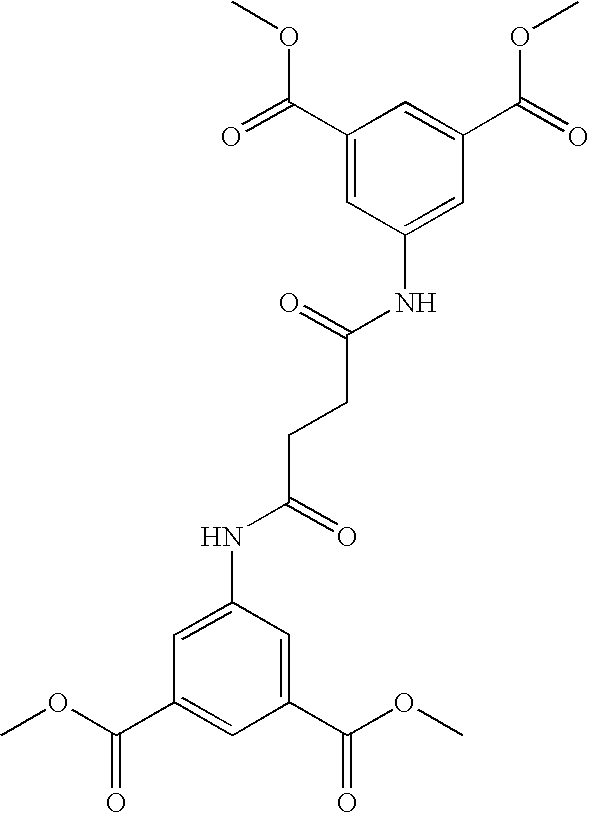Conventionally printable non-volatile passive memory element and method of making thereof
- Summary
- Abstract
- Description
- Claims
- Application Information
AI Technical Summary
Benefits of technology
Problems solved by technology
Method used
Image
Examples
invention example 1
Fully Ink-jet Printed Non-volatile Passive Memory Device
[0127] The first and second electrode systems were ink-jet printed with appropriate electrical contacts for reading out the stored information in contact on the subbed side of SUPPORT 01 from a Universal Printhead (from AGFA-GEVAERT) using the ink-jet ink, the surface of the subbing layer providing the insulating system. A non-volatile passive memory device precursor is thereby provided. Conductive bridges were then provided by ink-jet printing the ink-jet ink from a Universal Printhead (from AGFA-GEVAERT) between predesignated points of the first and the second electrode systems to produce a non-volatile passive memory device.
invention example 2
Flexographically / Ink Jet Printed Non-volatile Passive Memory Device
[0128] The first and second electrode systems were printed with appropriate electrical contacts for reading out the stored information in contact by flexographic printing using a Rotary Koater Pilot Press (from R.K. Print Coat Instruments, Ltd.) on SUPPORT 02 using the flexographic ink and then drying in an oven at 109° C. in a roll to roll process, the PET surface providing the insulating system. A non-volatile passive memory device precursor is thereby provided. conductive bridges were then provided by ink-jet printing the ink-jet jet ink from a Universal Printhead (from AGFA-GEVAERT) between predesignated points of the first and the second electrode systems to provide a non-volatile passive memory device.
invention example 3
Flexographically / Ink Jet Printed Non-volatile Passive Memory Device
[0129] The first and second electrode systems were printed with the appropriate electrical contacts required for reading out the stored information in contact by flexographic printing using a Rotary Koater Pilot Press (from R.K. Print Coat Instruments, Ltd.) on SUPPORT 03 using the flexographic ink and then drying in an oven at 109° C. in a roll to roll process, the surface of the subbing layer providing the insulating system. A non-volatile passive memory device precursor is thereby provided. Conductive bridges were then provided by ink-jet printing the ink-jet ink from a Universal Printhead (from AGFA-GEVAERT) between predesignated points of the first and the second electrode systems to provide a non-volatile passive memory device.
PUM
 Login to view more
Login to view more Abstract
Description
Claims
Application Information
 Login to view more
Login to view more - R&D Engineer
- R&D Manager
- IP Professional
- Industry Leading Data Capabilities
- Powerful AI technology
- Patent DNA Extraction
Browse by: Latest US Patents, China's latest patents, Technical Efficacy Thesaurus, Application Domain, Technology Topic.
© 2024 PatSnap. All rights reserved.Legal|Privacy policy|Modern Slavery Act Transparency Statement|Sitemap



